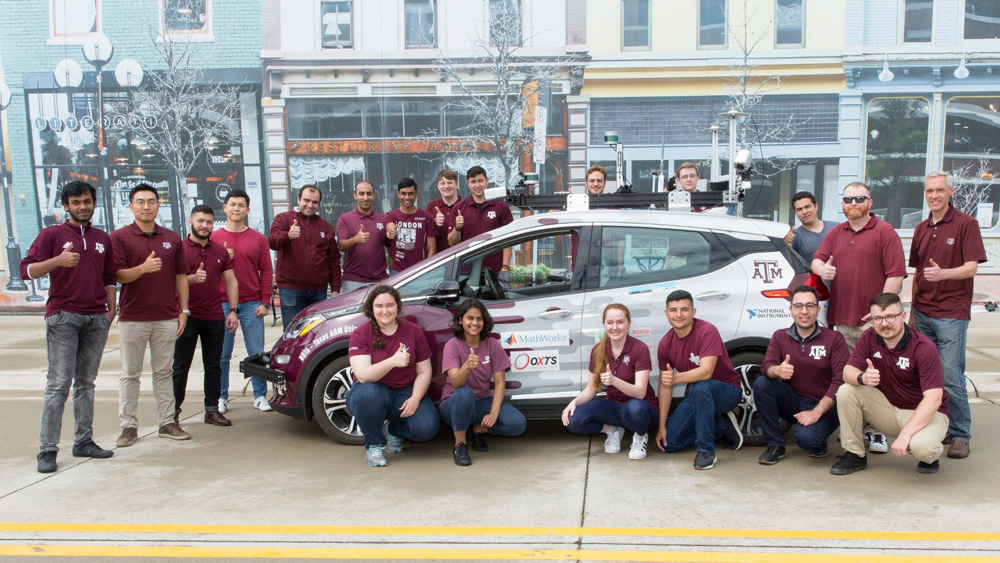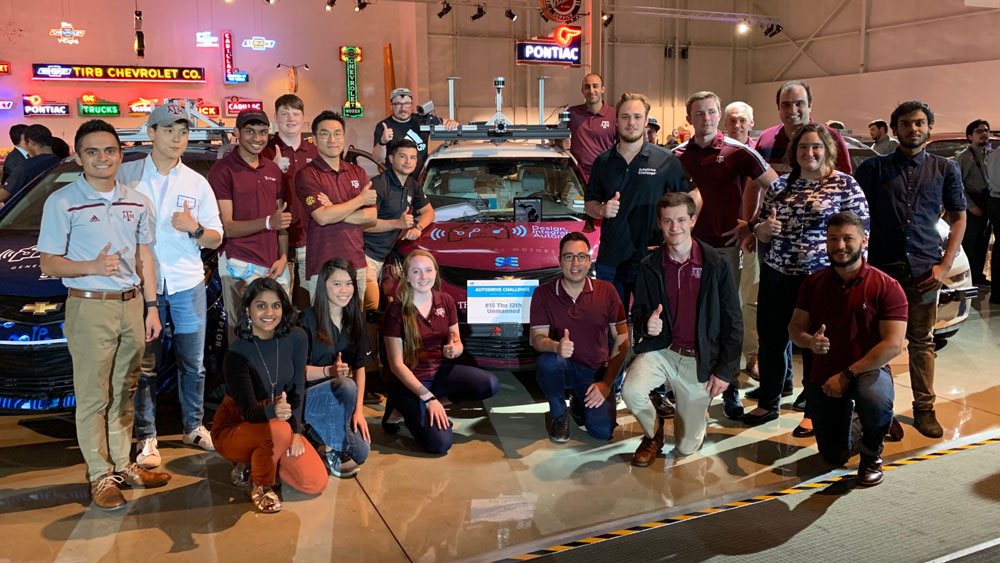
Putting their engineering pedal to the metal, a team of students from Texas A&M University has been awarded third place in the 2019 AutoDrive Challenge.
This three-year competition, hosted by General Motors and the Society for Automotive Engineers, challenges teams to develop and demonstrate a fully autonomous vehicle by the end of the third and final year. Each round of the competition raises the stakes and complexity of tasks – testing both the team’s car and their engineering ingenuity.
The Texas A&M team, known as The 12th Unmanned, included more than 50 students from multiple departments across the College of Engineering, including mechanical, electrical, computer science and civil engineering. Dr. Alireza Talebpour, assistant professor in the Zachry Department of Civil and Environmental Engineering, served as the faculty project lead.
While the inaugural year of the competition in 2018 focused on basic vehicular capabilities like stopping at stop signs, driving down a curved road and staying within a designated lane, the 2019 competition shifted gears to include more realistic scenarios.

“It was a big challenge compared to the first year because it was a lot more complicated and competitive, which made it really interesting and exciting,” said Talebpour. “For example, the difference in scores between us and second place was just seven out of 1,000 points. That says a lot about the talent of the students.”
This year the AutoDrive competition was held in Michigan’s Mcity, a test facility that can simulate various incidents that a vehicle may encounter while driving in an urban area. Events included sign detection and reaction, traffic signal observance, static and dynamic object avoidance and a simulated urban drive.
The sign detection and reaction challenge tested the car’s ability to accurately recognize, decode and react to speed limit, left and right turn only, and other street signs.
Similarly, the traffic signal event evaluated a vehicle’s ability to understand the type of traffic light displayed and adjust itself to follow whatever direction the light gave it.
The third part of the competition included being able to detect pedestrians and moving objects along the road and accommodate to them. This included identifying whether or not the object was actually moving or standing still.
Finally, and most challengingly, the last event simulated a drive through an urban area – capped at 25 miles per hour.

“An autonomous vehicle should be able to go through a tunnel, drive over railroad tracks and know if the gates are open or closed, react to traffic signals and signs, and deal with bicycles, pedestrians and moving animals like deer,” said Talebpour. “And the technical approach to each requires different things. Like, how do you train your model to see a deer and distinguish it from another animal?"
The answer lies within the team.
As Talebpour explained, AutoDrive spurs and thrives on interdisciplinary teamwork and collaboration. Bringing together students from various disciplines – each with different expertise, backgrounds and technical languages – not only is a vital lesson in real-world communication, but is also one of the most fun and critical aspects of the competition.
Since last year, the team has completely revamped and upgraded their vehicle – programming novel software and installing new hardware in order to prepare the car to take on the challenges that AutoDrive brings. Their wide range of skill sets and knowledge has allowed them to find new, innovative solutions and continue on the road of success.
Now, as they gear up for the final year of the competition, the team will need to bring in new talent and a diverse multidisciplinary group of young engineers to fill in the spaces left behind by graduating seniors.
“The success of this team is a testament to how great the students at Texas A&M are. Their work ethic is amazing. Everything they do is amazing. I'm honored to have the opportunity to lead this team and work with them,” said Talebpour. “Next year, we don’t know what they’re going to throw at us, but we know they want to make it more realistic. It will be very challenging, but very interesting.”